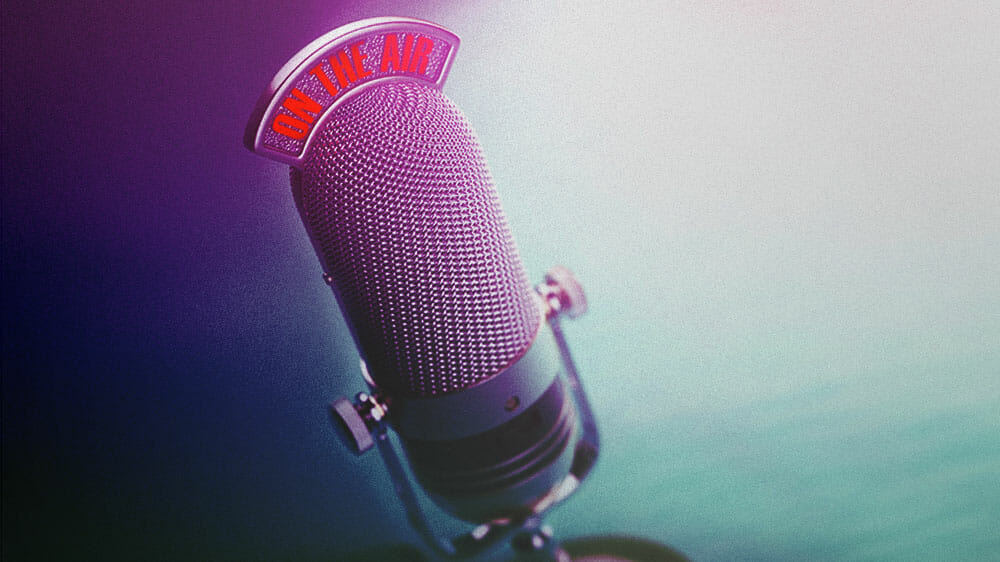With podcast advertising revenues almost doubling between 2016 and 2017, it’s safe to say that the medium is still a growing market. And despite its content crossover with radio networks like NPR, podcasts offer distinct advantages for certain marketers through the idiosyncratic format of host-read ads.
“The host-read ad is really all about the relationship that host has with an audience,” said Korri Kolesa, head of sales for Midroll Media, in an interview with AListDaily. “It’s almost like they’re providing a personal recommendation and endorsement of the thing that they’re talking about.”
“I always feel like our host-read podcast ads are influencers at scale,” she added.
Midroll Media, a podcast content company that runs comedy-network Earwolf and listening platform and subscription service Stitcher, certainly has a vested interest in pitching its ad products, but third-party research supports Kolesa’s point.
According to research by Westwood One, 55 percent of podcast listeners prefer to hear ads voiced by show hosts, compared to just 30 percent that enjoy more conventional radio ad creative.
And Midroll isn’t the only company experimenting with more integrated podcast advertising methods. Gimlet Media, producers of Tinder’s branded podcast DTR, conducts interviews with advertiser spokespeople in addition to reading from talking points.
“I love the work Gimlet’s doing,” Kolesa said. “They do really beautiful, creative executions, and I do think it’s a good way for brands to tell a little bit of a deeper story.”
Kolesa attributes this preference to a sort of audio banner blindness: “Your brain automatically, almost unconsciously, knows an ad is coming when you hear that break in programming,” she said. “When it’s pre-recorded, you’re not as engaged, you’re not listening in the same way.”
Overall, podcast listeners seem highly tolerant of ads on the medium. Seventy-one percent of podcast listeners claim not to mind pre-roll (or prestitial) ads, a practice so unpopular for mobile web users that Google intends to block all ads on sites that rely on them. Additionally, 65 percent of listeners would not mind listening to extra ads per show to support the podcasts they enjoy.
Even though the podcasting audience is predominantly receptive, ad viewability (or listenability) is still a concern for marketers. Because podcasts are distributed as simple audio files, listeners are free to play them as fast as they like—on Apple’s podcast app, users can up to double an episode’s play speed—a practice known as “speed listening.” Westwood One’s research indicates that 42 percent of podcast listeners have tried speed listening at least once.
For Midroll, the trend isn’t as much of an issue. “It’s part of the conversation,” Kolesa said, “but it’s not something I’m giving a lot of pause to.”
Part of this nonconcern stems from the extemporaneous nature of host-read ads. Even when sped up, on-the-spot ad reads tend to be much longer than standard pre-produced spots. On one of Earwolf’s flagship podcasts, Comedy Bang Bang, ads can meander as long as two or three minutes apiece, which still nets an impressive airtime when sped through at double the normal rate. By comparison, pre-recorded spots on podcasts like The Daily and This American Life peak at 30 seconds.
Despite the relative strengths of host-read ads, the industry seems to be shifting away from them. Research by the IAB saw the share of podcast advertising revenue increase by 3 percent for pre-produced ads between 2015 and 2016.
As brand safety becomes more threatened by programmatic placement, the lack of granular message control for host-read ads may put off some marketers burned by other platforms’ content moderation problems. So too is the lack of all-important data in the medium.
“In the school of direct-response advertisers, they’re qualifying the success of a campaign based on an action that happens that they’re tracking on their side,” Midroll’s Korri Kolesa said. “We don’t usually get insight into that side of the house.”
Brand awareness campaigns, a type that went from 17 percent revenue share in 2015 to 25 percent in 2016, rely on even less direct data: “We will often run brand recall studies, or we’ll work with a third party like Nielsen,” Kolesa said. “We can do some of that now, and some of that we do with third-party research vendors.”
However, this dearth of data isn’t going to last long. Apple, whose podcasting app accounts for 50 percent of all podcast downloads, has released detailed analytics tools for podcast publishers. Although still in beta, these tools will finally allow marketers to see in-episode listening habits like completion rates and ad skipping.
Unfortunately, no information is as yet publicly available, but publishers interested in appearing more credible will undoubtedly provide metrics to interested advertisers. Additionally, the second-place podcast provider, Spotify, already tracks listener data, though its ad offerings are much more conventional.
“I’m a champion of more insight, more transparency, more data,” said Kolesa. “I think it’ll help more people get comfortable with what we’re doing in our space.”
Although thorough data isn’t as available as many marketers would like it to be, Kolesa was quick to point out that the industry is still developing.
“For an early-stage industry, you find that the people who are moving first are fans,” she said. “We’re just at the beginning.”

